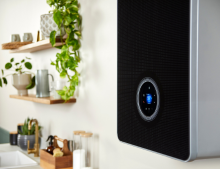How often should I need to top up the pressure in the heating system?
When the heating system is cool, the pressure should be between 1 and 1.5 bar on the pressure gauge (the indicator needle would usually be in the green section). If pressure is below 0.5 bar (down in the red section), water has been lost from the system and must be replaced. Note: The red part of the dial could also indicate the pressure being too high (about 2.75 bar or more). If the pressure gauge indicates high pressure as a result of over filling, you will need to bleed a radiator until the pressure gauge returns between 1 and 1.5 bar.
Read our guide on how to repressurise your system.
If pressure rises by more than 1 bar when the heating is up to temperature then the expansion vessel may require repressurising. This will require a service engineer. The pressure in the system will usually require topping up once or twice a year. If you are having to repressurise your heating system much more frequently, please contact your installer.
More Home Heating FAQs
- Guarantee vs Warranty
- How to bleed a radiator
- How do I know that my condensate pipe is blocked?
- My boiler is producing a 'gurgling' sound what could be the cause?
- What is a thermostatic radiator valve (TRV)?
- Why might I want to programme hot water times with my combi boiler?
- Do I need a boiler, solar panels or heat pumps to heat my home?
- Do you recommend treatment of the central heating water?
- How does part L of the Building Regulations affect my boiler installation?
- What do the error symbols mean on my boiler?




